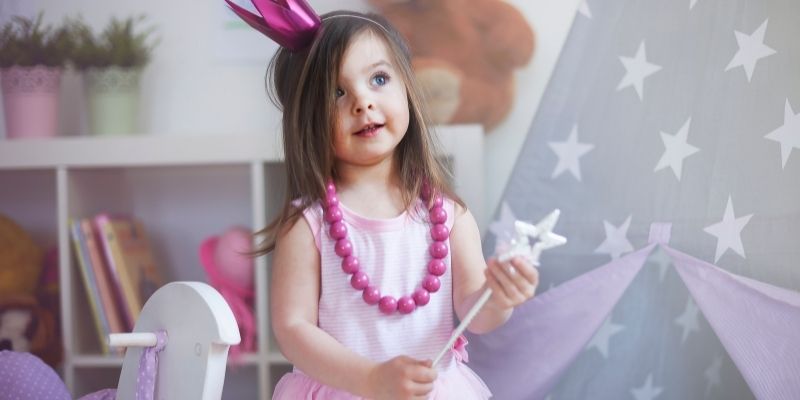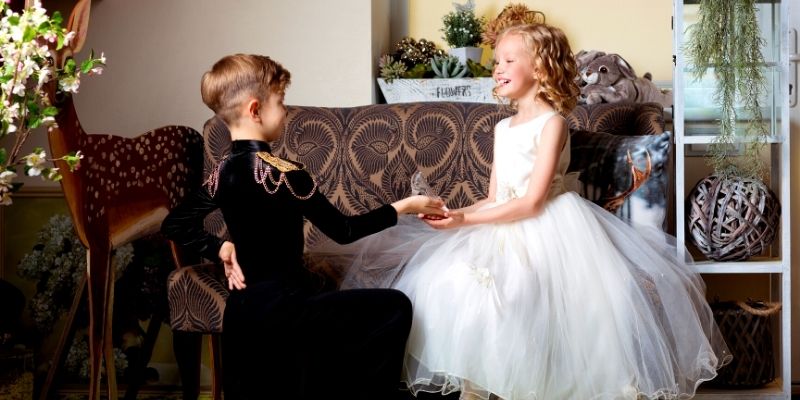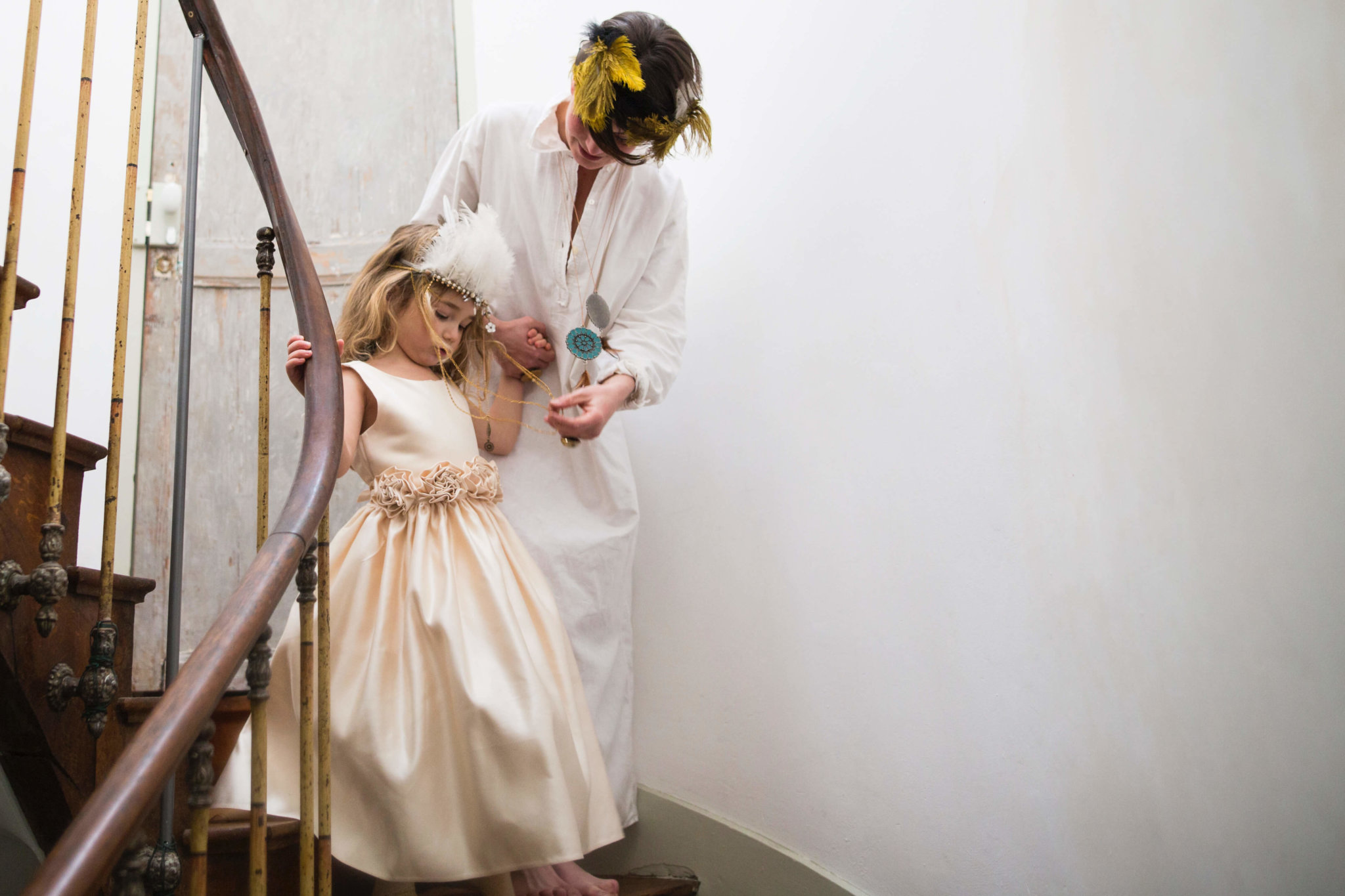This article is about surviving and thriving in The Princess Years:
When my daughter first drank the princess Kool-Aid, shortly after her third birthday, I was a little skeptical.
I had a bunch of my own perceptions about all of the lovely ladies in the Disney castles.
While I wanted both of my children to know that their lives shouldn’t be limited to the quest for someone else to be the key to their own happiness.
As I neutrally asked my toddling daughter why she thought princesses were the bee’s knees.
She explained to me things about princesses that I had not really thought about.
She spoke about their connection with animals, how they love to sing, and that they’re happy.
Even when life hands them a bucket full of dirty mop water or an evil stepmother bent on destroying them.
For my daughter, it wasn’t, and never has been, about Prince Charming or Eric, or anyone else beyond the princesses.
I fully admit that it wasn’t fair to launch my perceptions about what is wrong with “princess culture” onto a three-year-old.
She liked their attitudes, their resilience, and the gorgeous flowing dresses didn’t hurt either.

Just the same, it’s naïve to believe that the Princess brand launched by Disney in 2000 isn’t impacting our children.
The Impact of The Princess to Kids
A study led by Sarah Coyne, Associate Professor of Family Life, Birmingham University, delved into how the world of the princess impacted a group of 198 pre-school and kindergarten children (both boys and girls).
The findings from the study raise a number of flags and suspicions I’ve had for a while.
Girls who are big on princess culture were more likely to behave in stereotypically feminine ways.
Girls with a lower-body image were generally more into princess culture a year later.
There is absolutely no evidence that princess culture engagement influenced girls and their behavior in a positive way.
Take a big breath, parents of a crown-wearing pretty princess, there was some good news.
Engaging with princesses does have a positive impact on little boys.
And even provided some balance in comparison to some of the uber aggressive messaging generally targeted in the media for little boys.
For me, it reinforced how it’s wrong for us to simply monitor and evaluate our daughter’s media consumption.
Particularly, with the rampant violent messaging for “boy” oriented messaging.
This can be just as damaging as unrealistic princess body images.
The study also highlighted the importance of having conversations with our children about the media.
Ensuring that they are media savvy and able to critically look at and select media.
This will help raise them up instead of tearing them down.

In this current political climate, I find it particularly important to teach my children about feminism.
I want to encourage them to have strong role models in both real life, their comics, storybooks, and on their TV screens.
While things are far from perfect, there are more and more awesome female heroes readily accessible for everyone to enjoy.
Today there are more female comic artists than ever before.
As a result, this has led to an acutely better representation of girls in the superhero genre; which is awesome.
Disney has also upped its game a little in terms of providing princesses with a little more oomph and voice compared to those of just a few years ago.
We still watch Disney movies, but our conversations have evolved, especially as my kids get older.
We have conversations about Moana and leadership, Merida, and her strained relationship with her mother.
But mostly, we talk about expectations, dreams, choices, and practical problem-solving.
Our princess focus has broadened into the world of superheroes, some of whom still wear crowns and hold official princess titles.
Princess Leia, Batgirl, Wonder Woman, She-ra, Raven (Teen Titans), and Sailor Mercury (Sailor Moon) have become fast favorites.
Both of our kids have such fantastic role models in real life that it’s nice to see popular culture step up to the plate.
I want my kids to know that you can be fancy and tough. Moreover, it’s okay for anyone to cry, that violence isn’t the solution to problems.
And also to help them understand that the world is filled with grey as well as black and white solutions.
Seems like a tall order – I better go get my cape and crown!
To find more parenting tips about raising kids, follow this link; A Guide To More Effective Parenting
An Occupational therapist, freelance content writer and more importantly a stay-at-home mom, Sara, like all other parents juggles her many roles. Her passion for writing combined with her professional expertise as an Occupational therapist (working with children with special needs) has helped her craft content specific to child health, wellness and learning skills. At present, Sara alternates her time between raising her two young children, and writing about what she knows best- children!





